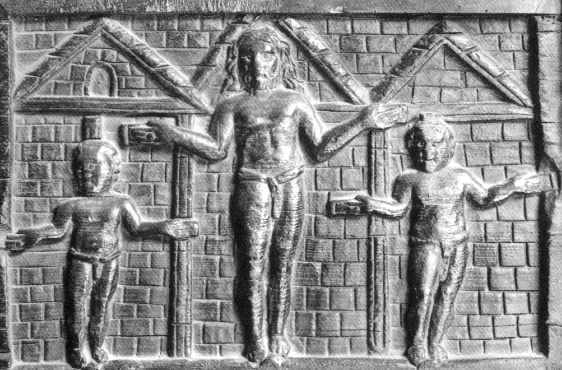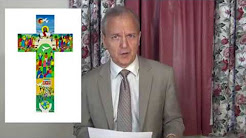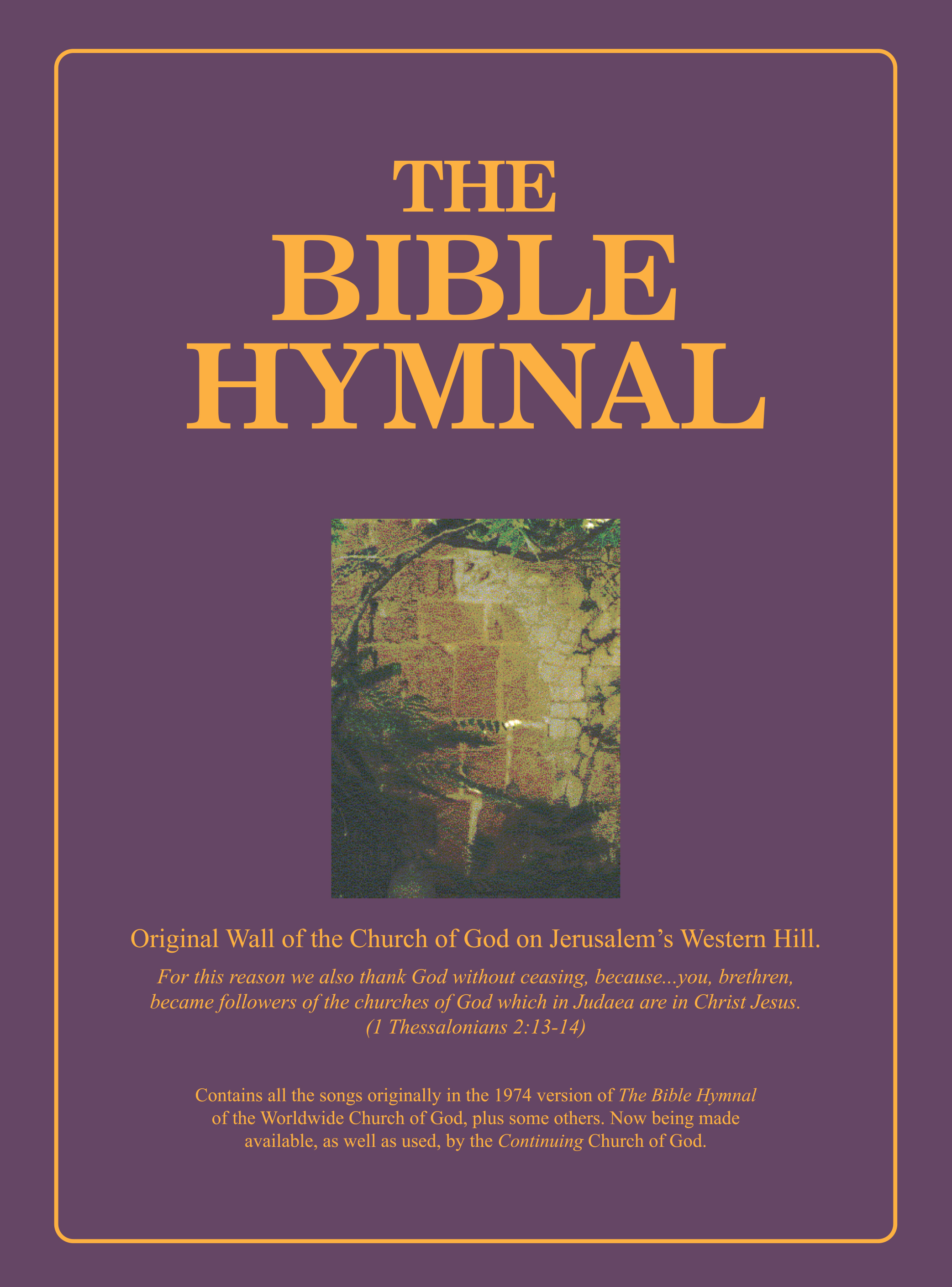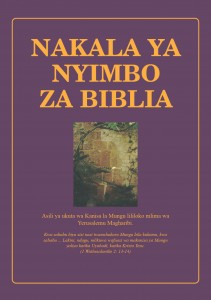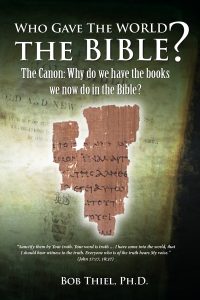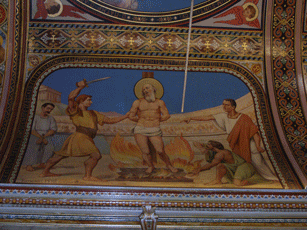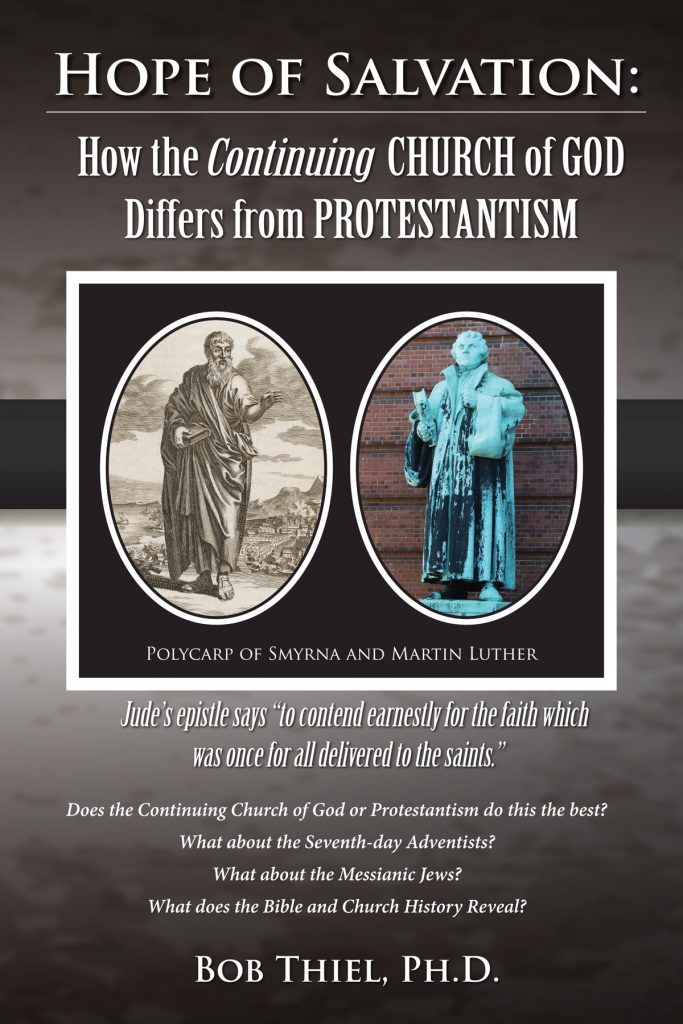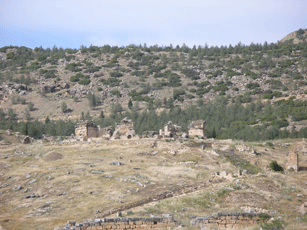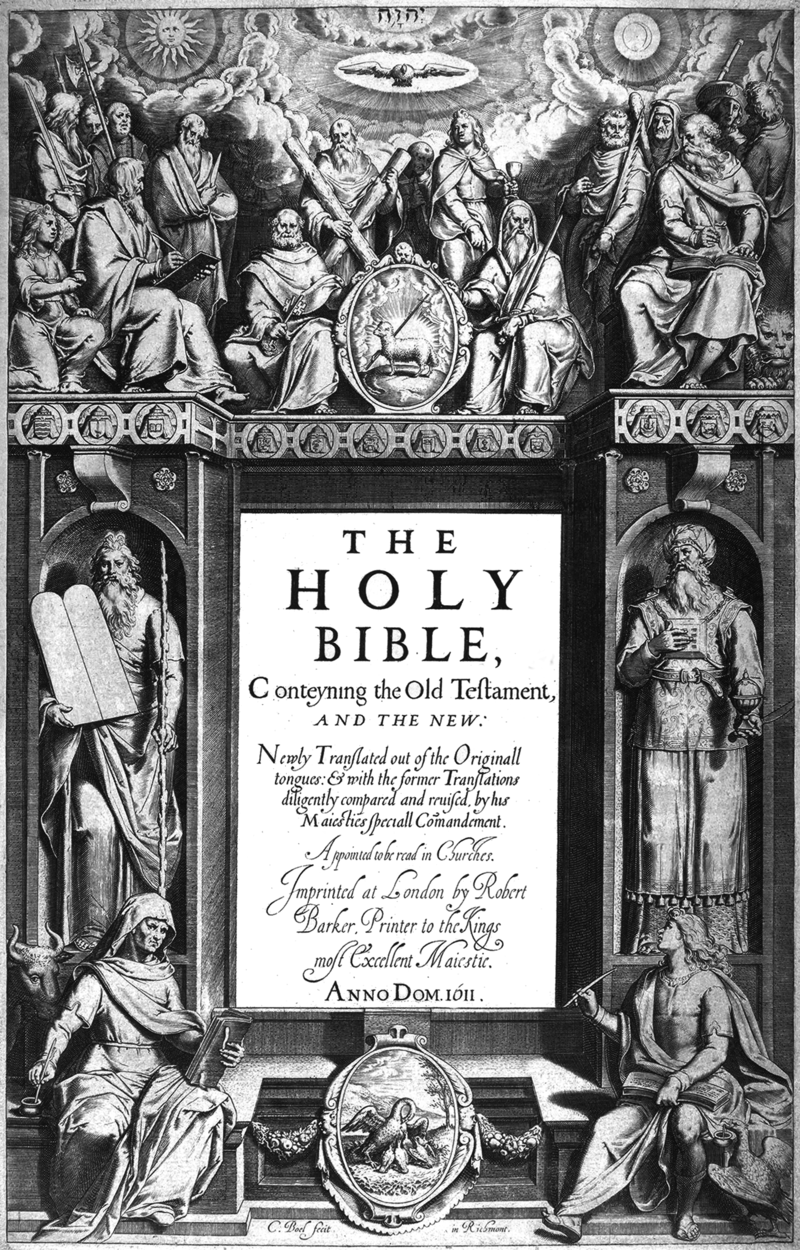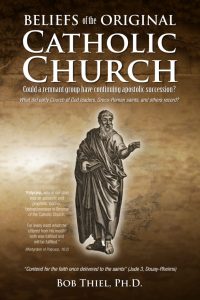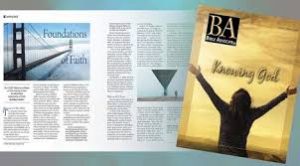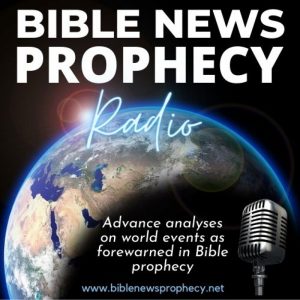Which days did early followers of Jesus observe in the Spring?
Wednesday, March 3rd, 2021
This time of year, those faithful in the Churches of God have been following Paul’s admonition to examine themselves prior to the start of the Spring Holy Days (1 Corinthians 11:27-32).
Others observe nothing or perhaps Lent.
While most people realize that Jesus observed what many consider to be “Jewish” Holy Days, most have apparently not realized that the observance of these days was the practice of nearly all of those who professed Christ in the first few centuries of Christianity.
The first century Christians observed all the holy days listed in Leviticus Chapter 23. Specifically the New Testament shows that they observed the Passover and Days of Unleavened Bread (1 Corinthians 5:7-8), Pentecost (Acts 2:1-4;20:16; 1 Corinthians 16:8), the Day of Atonement (called the Fast, Acts 27:9) the Feast of Tabernacles (called the Feast, Acts 18:21) and Last Great Day (John 7:37). And that the fulfillment’s of the Feast of Trumpets is also described in the New Testament (1 Thessalonians 4:15-18; Revelation 8-11).
Catholic scholars realize that these practices were continued as well.
For example, The Catholic Encyclopedia states this about Passover:
The connection between the Jewish Passover and the Christian feast of Easter is real and ideal. Real, since Christ died on the first Jewish Easter Day; ideal, like the relation between type and reality, because Christ’s death and Resurrection had its figures and types in the Old Law, particularly in the paschal lamb, which was eaten towards evening of the 14th of Nisan. In fact, the Jewish feast was taken over into the Christian Easter celebration…The connection between the Jewish and the Christian Pasch explains the movable character of this feast…Since Christ, the true Paschal Lamb, had been slain on the very day when the Jews, in celebration of their Passover, immolated the figurative lamb, the Jewish Christians in the Orient followed the Jewish method, and commemorated the death of Christ on the 15th of Nisan and His Resurrection on the 17th of Nisan, no matter on what day of the week they fell. For this observance they claimed the authority of St. John and St. Philip (Holwek F. G. Transcribed by John Wagner and Michael T. Barrett. Easter. The Catholic Encyclopedia, Volume V. Copyright © 1909 by Robert Appleton Company. Online Edition Copyright © 2003 by Kevin Knight. Nihil Obstat, May 1, 1909. Remy Lafort, Censor. Imprimatur. +John M. Farley, Archbishop of New York).
Well, actually those in the true church in the Orient observed the 14th day of Nisan (see article on Polycrates or Apollinaris). However, the basic point is that the Catholic Church admits that Christ was slain on the Passover and that it still should be observed (even though they changed the name, intent, and the date–also the Jews never called it Easter).
For another example, The Catholic Encyclopedia states this about Pentecost and then something about Lent:
Pentecost…A feast of the universal Church which commemorates the Descent of the Holy Ghost upon the Apostles, fifty days after the Resurrection of Christ, on the ancient Jewish festival called the “feast of weeks” or Pentecost (Exodus 34:22; Deuteronomy 16:10)…Pentecost (“Pfingsten” in German), is the Greek for “the fiftieth”…In Tertullian (De bapt., xix) the festival appears as already well established (Holweck F.G. Transcribed by Wm Stuart French, Jr. Pentecost (Whitsunday). The Catholic Encyclopedia, Volume XV. Copyright © 1912 by Robert Appleton Company. Online Edition Copyright © 2003 by Kevin Knight. Nihil Obstat, October 1, 1912. Remy Lafort, S.T.D., Censor. Imprimatur. +John Cardinal Farley, Archbishop of New York).
Some of the Fathers as early as the fifth century supported the view that this forty days’ fast was of Apostolic institution…But the best modern scholars are almost unanimous in rejecting this view…Formerly some difference of opinion existed as to the proper reading, but modern criticism (e.g., in the edition of Schwartz commissioned by the Berlin Academy) pronounces strongly in favor of the text translated above. We may then fairly conclude that Irenaeus about the year 190 knew nothing of any Easter fast of forty days…And there is the same silence observable in all the pre-Nicene Fathers, though many had occasion to mention such an Apostolic institution if it had existed. We may note for example that there is no mention of Lent in St. Dionysius of Alexandria (ed. Feltoe, 94 sqq.) or in the “Didascalia”, which Funk attributes to about the year 250 (Lent. The Catholic Encyclopedia).
Lent was not observed by early Christians. But Passover and Pentecost were.
In the early third century, the Catholic theologian Origen listed the following as being celebrated:
If it be objected to us on this subject that we ourselves are accustomed to observe certain days, as for example… the Passover, or Pentecost…(Origen. Contra Celsus, Book VIII, Chapter XXII. Excerpted from Ante-Nicene Fathers, Volume 4. Edited by Alexander Roberts & James Donaldson. American Edition, 1885. Online Edition Copyright © 2005 by K. Knight).
It is likely that other days were also then celebrated. While Origen listed what would be considered to be the Spring Holy Days, some were still keeping those known as the Fall Holy Days.
Notice what a respected Protestant scholar reported about the second century:
The most important in this festival was the passover day, the 14th of Nisan…In it they ate unleavened bread, probably like the Jews, eight days through…there is no trace of a yearly festival of the resurrection among them…the Christians of Asia Minor appealed in favor of their passover solemnity on the 14th Nisan to John (Gieseler, Johann Karl Ludwig. A Text-book of Church History. Translated by Samuel Davidson, John Winstanley Hull, Mary A. Robinson. Harper & brothers, 1857, Original from the University of Michigan, Digitized Feb 17, 2006, p. 166).
So, like the Apostle John (the last of the original apostles to die), the early faithful Christians observed Passover and the Days of Unleavened Bread.
Perhaps it might be helpful to realize that Catholics do admit that early Christians did observe the Feast of Tabernacles:
St. Jerome (PL 25, 1529 & 1536-7) speaking of how the Judaeo-Christians celebrated the Feast of Tabernacles…tells us that they gave the feast a millenarian significance (Bagatti, Bellarmino. Translated by Eugene Hoade. The Church from the Circumcision. Nihil obstat: Marcus Adinolfi. Imprimi potest: Herminius Roncari. Imprimatur: +Albertus Gori, die 26 Junii 1970. Franciscan Printing Press, Jerusalem, p.202).
We in the Continuing Church of God also keep the Feast of Tabernacles and believe that it foreshadows the coming millennium.
The early Church clearly kept what are now known as Jewish Holy Days and saw Christian fulfillment’s in them (especially the Spring ones). And since the Apostles observed them in the New Testament, shouldn’t they, and not Christmas, be celebrated by true followers of Christ. Gradually, those under Catholic influence stopped celebrating the Fall Holy Days.
Even into the late 4th century, history records that the Fall Holy Days were still being celebrated by some who professed Christ.
Yet, the Catholic saint John Chrysostom preached against them in 387 A.D.:
The festivals of the pitiful and miserable Jews are soon to march upon us one after the other and in quick succession: the feast of Trumpets, the feast of Tabernacles, the fasts. There are many in our ranks who say they think as we do…
If the Jewish ceremonies are venerable and great, ours are lies…
Does God hate their festivals and do you share in them? He did not say this or that festival, but all of them together (John Chrysostom. Homily I Against the Jews I:5;VI:5;VII:2.. Preached at Antioch, Syria in the Fall of 387 AD. Medieval Sourcebook: Saint John Chrysostom (c.347-407) : Eight Homilies Against the Jews. Fordham University. http://www.fordham.edu/halsall/source/chrysostom-jews6.html 12/10/05).
Now this actually causes a problem for the Roman Catholic and Eastern Orthodox churches. First, it shows that until at least the late fourth century, that some who professed Christ still kept all the Holy Days. Secondly, even the current pontiff acts like the Fall Holy Days are venerable (he used the term “a blessing” in a news item about them previously). And thirdly, since the Catholic Church claims that it still keeps a version of Passover (though under the name Easter in English) and Pentecost, then their saint, John Chrysostom, should never have condemned all of the festivals that God gave the Jews.
Yet John Chrysostom condemned them.
A book called The Life of Polycarp contains some possibly helpful information about Polycarp. Polycarp is considered to have been a saint by the Church of Rome, the Eastern Orthodox, and the Continuing Church of God.
For example, it specifically mentions the Sabbath, Passover, the Days of Unleavened Bread, Pentecost, and the Last Great Day of the Feast of Tabernacles. And it endorses keeping them:
In the days of unleavened bread Paul, coming down from Galatia, arrived in Asia, considering the repose among the faithful in Smyrna to be a great refreshment in Christ Jesus after his severe toil, and intending afterwards to depart to Jerusalem. So in Smyrna he went to visit Strataeas, who had been his hearer in Pamphylia, being a son of Eunice the daughter of Lois. These are they of whom he makes mention when writing to Timothy, saying; Of the unfeigned faith that is in thee, which dwelt first in thy grandmother Lois and in thy mother Eunice; whence we find that Strataeas was a brother of Timothy. Paul then, entering his house and gathering together the faithful there, speaks to them concerning the Passover and the Pentecost, reminding them of the New Covenant of the offering of bread and the cup; how that they ought most assuredly to celebrate it during the days of unleavened bread, but to hold fast the new mystery of the Passion and Resurrection. For here the Apostle plainly teaches that we ought neither to keep it outside the season of unleavened bread, as the heretics do, especially the Phrygians…but named the days of unleavened bread, the Passover, and the Pentecost, thus ratifying the Gospel (Pionius. Life of Polycarp, Chapter 2. Translated by J. B. Lightfoot, The Apostolic Fathers, vol. 3.2, 1889, pp.488-506).
What must one say, when even He that was gentler than all men so appeals and cries out at the feast of Tabernacles? For it is written; And on the last day, the great day of the feast, Jesus stood and cried saying, If any man thirsteth, let him come to Me and drink (Chapter 19).
And on the sabbath, when prayer had been made long time on bended knee, he, as was his custom, got up to read; and every eye was fixed upon him. Now the lesson was the Epistles of Paul to Timothy and to Titus, in which he says what manner of man a bishop ought to be. And he was so well fitted for the office that the hearers said one to another that he lacked none of those qualities which Paul requires in one who has the care of a church. When then, after the reading and the instruction of the bishops and the discourses of the presbyters, the deacons were sent to the laity to enquire whom they would have, they said with one accord, ‘Let Polycarp be our pastor and teacher’ (Chapter 22).
And on the following sabbath he said; ‘Hear ye my exhortation, beloved children of God…’ (Chapter 24).
Hence there is an ancient document that claims that Polycarp did keep the Sabbath and the Holy Days (of course, other ancient documents, as shown in this article, support this). And there would have been no reason for Greco-Roman supporters in the 4th century to change the document to indicate that he did so, hence The Life of Polycarp does claim that Polycarp kept the Sabbath and the Holy Days.
Polycrates, who was bishop of Ephesus, wrote the following around 195 A.D.:
We observe the exact day; neither adding, nor taking away. For in Asia also great lights have fallen asleep, which shall rise again on the day of the Lord’s coming, when he shall come with glory from heaven, and shall seek out all the saints. Among these are Philip, one of the twelve apostles, who fell asleep in Hierapolis; and his two aged virgin daughters, and another daughter, who lived in the Holy Spirit and now rests at Ephesus; and, moreover, John, who was both a witness and a teacher, who reclined upon the bosom of the Lord, and, being a priest, wore the sacerdotal plate. He fell asleep at Ephesus. And Polycarp in Smyrna, who was a bishop and martyr; and Thraseas, bishop and martyr from Eumenia, who fell asleep in Smyrna. Why need I mention the bishop and martyr Sagaris who fell asleep in Laodicea, or the blessed Papirius, or Melito, the Eunuch who lived altogether in the Holy Spirit, and who lies in Sardis, awaiting the episcopate from heaven, when he shall rise from the dead ? All these observed the fourteenth day of the passover according to the Gospel, deviating in no respect, but following the rule of faith. And I also, Polycrates, the least of you all, do according to the tradition of my relatives, some of whom I have closely followed. For seven of my relatives were bishops; and I am the eighth. And my relatives always observed the day when the people put away the leaven. I, therefore, brethren, who have lived sixty-five years in the Lord, and have met with the brethren throughout the world, and have gone through every Holy Scripture, am not affrighted by terrifying words. For those greater than I have said ‘ We ought to obey God rather than man’…I could mention the bishops who were present, whom I summoned at your desire; whose names, should I write them, would constitute a great multitude. And they, beholding my littleness, gave their consent to the letter, knowing that I did not bear my gray hairs in vain, but had always governed my life by the Lord Jesus (Eusebius. Church History. Book V, Chapter 24).
This shows that he and many people considered to be saints by the Greco-Roman churches observed Passover on the 14th. There is no doubt that the so-called “Jewish” Holy Days were still observed by the faithful Christians in Asia Minor and elsewhere for centuries after Christ died. Gentile leaders kept the Holy Days.
What was not observed, until probably the 4th century, even by the Roman Catholic and Eastern Orthodox churches, was Christmas. Birthdays were also not observed until about that time. Nor was a 40 day period called Lent, nor Valentine’s Day, nor many other days that many observe today.
In apparently the third century Apollinaris (who is generally considered to have been a bishop and saint) wrote,
There are, then, some who through ignorance raise disputes about these things (though their conduct is pardonable: for ignorance is no subject for blame — it rather needs further instruction), and say that on the fourteenth day the Lord ate the lamb with the disciples, and that on the great day of the feast of unleavened bread He Himself suffered; and they quote Matthew as speaking in accordance with their view. Wherefore their opinion is contrary to the law, and the Gospels seem to be at variance with them…The fourteenth day, the true Passover of the Lord; the great sacrifice, the Son of God instead of the lamb, who was bound, who bound the strong, and who was judged, though Judge of living and dead, and who was delivered into the hands of sinners to be crucified, who was lifted up on the horns of the unicorn, and who was pierced in His holy side, who poured forth from His side the two purifying elements, water and blood, word and spirit, and who was buried on the day of the passover, the stone being placed upon the tomb (Apollinaris. From the Book Concerning Passover. Translated by Alexander Roberts and James Donaldson. Excerpted from Volume I of The Ante-Nicene Fathers. Alexander Roberts and James Donaldson, editors; American Edition copyright © 1885. Copyright © 2001 Peter Kirby).
Apollinaris is showing then that the Passover is (Nisan 14) and that it signifies the sacrifice of Christ, both of which are the positions of the Churches of God.
Adventist researcher Daniel Liechty reported Sabbath-keepers in Transylvania in the 1500s and later kept the biblical Holy Days (such as the Feast of Trumpets called Day of Remembrance below) (and those are days his church does not observe):
The Sabbatarians viewed themselves as converted Gentiles.. They held to the biblical holidays. Passover they celebrated with unleavened bread…The first and last seventh day of Passover were full holidays…There is no mention of circumcision, so it is unlikely that they practiced circumcision (Liechty D. Sabbatarianism in the Sixteenth Century. Andrews University Press, Berrien Springs (MI), 1993, pp. 61-62).
The biblical Holy Days are still observed by faithful groups in the 21st century like the Continuing Church of God.
Do you follow the practices of the early faithful Christians? A related sermon is Which Spring Days should Christians observe?
Some items to assist in your studies may include:
Should You Observe God’s Holy Days or Demonic Holidays? This is a free pdf booklet explaining what the Bible and history shows about God’s Holy Days and popular holidays. A related sermon is Which Spring Days should Christians observe?
Is There “An Annual Worship Calendar” In the Bible? This paper provides a biblical and historical critique of several articles, including one by WCG which states that this should be a local decision. What do the Holy Days mean? Also you can click here for the calendar of Holy Days.
Is Lent a Christian Holiday? When did it originate? What about Ash Wednesday? If you observe them, do you know why? Here is an old, by somewhat related, article in the Spanish language by Dr. Hoeh: ¿Por Qué Se Observa la Cuaresma? Here is a link to a related sermon: Lent, Ash Wednesday, Carnaval, and Christianity?
Keeping Passover and the Days of Unleavened Bread How should Christians keep Passover, especially if they are by themselves. Why does the Church of God not require lambs for Passover? How does one keep the Days of Unleavened Bread? For a step-by-step video for Christians to keep it, check out CCOG Passover Service. Here is a link to a related article in the Spanish language: Guardando la Pascua y los Días de los Panes sin Levadura.Examine Yourself before Passover This article goes into some of why real Christians are to do this. Two related sermons are Really examine yourself before Passover and Passover Examination.
Preparing for Passover The Apostle Paul taught that Christians should examine themselves prior to taking Passover. This YouTube video sermon gives suggestions on how to prepare.
Passover and the Early Church Did the early Christians observe Passover? What did Jesus and Paul teach? Why did Jesus die for our sins? There is also a detailed YouTube video available titled History of the Christian Passover.
The Passover Plot What was the first Passover plot? Which plots have Islam and the Greco-Roman faiths perpetuated about Passover? A sermon video of related interest is The Passover Plots, Including Easter.
Melito’s Homily on the Passover This is one of the earliest Christian writings about the Passover. This also includes what Apollinaris wrote on the Passover as well. Here is a related sermon, also titled Melito’s Homily on the Passover.
TPM: Passover on the 14th or 15th? While the real COG observes Passover on the 14th, some observe it on the 15th. Why is the 14th correct? A related sermon is titled Is Passover on the 14th or 15th for Christians?
Unleavened Bread recipes A Serbian COG member, now CCOG elder, sent these recipes for those who would like more ways to prepare unleavened bread. Here is a link to recipes in Spanish: Recetas de Recuerdo.
The Night to Be Observed What is the night to be much observed? When is it? Why do Jews keep Passover twice and emphasize the wrong date? A related animation is available and is titled: Night to Be Observed.
Should Christians Keep the Days of Unleavened Bread? Do they have any use or meaning now? What is leaven? This article supplies some biblical answers. Here are two YouTube videos intended to be viewed for the first day of unleavened bread:Leaven and Sin and Christians and the Days of Unleavened Bread.
Pentecost: Is it more than Acts 2? Many “Christians” somewhat observe Pentecost. Do they know what it means? It is also called the Feast of Harvest, the Feast of Weeks, and the day of firstfruits. What about “speaking in tongues” and led by the Holy Spirit? (Here is a related link in Spanish/español: Pentecostés: ¿Es más que Hechos 2? plus one by Herbert Armstrong HWA sobre Pentecostés). Here is a YouTube sermon titled Pentecost: Feast of Firstfruits.
Did Early Christians Observe the Fall Holy Days? The ‘Fall’ Holy Days come every year in September and/or October on the Roman calendar. Some call them Jewish holidays, but they were kept by Jesus, the apostles, and their early faithful followers. Should you keep them? What does the Bible teach? What do records of church history teach? What does the Bible teach about the Feasts of Trumpets, Atonement, Tabernacles, and the Last Great Day? Here is a link to a related sermon: Should you keep the Fall Holy Days?
The Book of Life and the Feast of Trumpets? Are they related? Is so how? If not, where not? What does the Feast of Trumpets, which the Jews call Rosh Hashanah, help teach? A related sermon video would be Feast of Trumpets and the Book of Life as well as The Trumpet Release. The article has links to hear shofar blasts.
The Day of Atonement–Its Christian Significance The Jews call it Yom Kippur, Christians “The Day of Atonement.” Does it have any relevance for Christians today? What is the Jubilee? Is fasting healthy? Here is a link to a sermon: Day of Atonement: How Jesus fulfilled His part for the Atonement. Here is a link to a related article in the Spanish language: El Día de Expiación –Su significado cristiano.
The Feast of Tabernacles: A Time for Christians? Is this pilgrimage holy day still valid? Does it teach anything relevant for today’s Christians? What is the Last Great Day? What do these days teach?
The Last Great Day: Shemini ‘Azeret What is the ‘eighth day’ of the Feast? What does it help picture? A sermon on this topic is also available: Shemini Azaret: The Last Great Day.
Hope of Salvation: How the Continuing Church of God Differs from Protestantism The CCOG is NOT Protestant. This free online book explains how the real Church of God differs from mainstream/traditional Protestants. Several sermons related to the free book are also available: Protestant, Baptist, and CCOG History; The First Protestant, God’s Command, Grace, & Character; The New Testament, Martin Luther, and the Canon; Eucharist, Passover, and Easter; Views of Jews, Lost Tribes, Warfare, & Baptism; Scripture vs. Tradition, Sabbath vs. Sunday; Church Services, Sunday, Heaven, and God’s Plan; Seventh Day Baptists/Adventists/Messianics: Protestant or COG?; Millennial Kingdom of God and God’s Plan of Salvation; Crosses, Trees, Tithes, and Unclean Meats; The Godhead and the Trinity; Fleeing or Rapture?; and Ecumenism, Rome, and CCOG Differences.
Where is the True Christian Church Today? This free online pdf booklet answers that question and includes 18 proofs, clues, and signs to identify the true vs. false Christian church. Plus 7 proofs, clues, and signs to help identify Laodicean churches. A related sermon is also available: Where is the True Christian Church? Here is a link to the booklet in the Spanish language: ¿Dónde está la verdadera Iglesia cristiana de hoy? Here is a link in the German language: WO IST DIE WAHRE CHRISTLICHE KIRCHE HEUTE? Here is a link in the French language: Où est la vraie Église Chrétienne aujourd’hui?
Continuing History of the Church of God This pdf booklet is a historical overview of the true Church of God and some of its main opponents from Acts 2 to the 21st century. Related sermon links include Continuing History of the Church of God: c. 31 to c. 300 A.D. and Continuing History of the Church of God: 4th-16th Centuries and Continuing History of the Church of God: 17th-20th Centuries. The booklet is available in Spanish: Continuación de la Historia de la Iglesia de Dios, German: Kontinuierliche Geschichte der Kirche Gottes, French: L’Histoire Continue de l’Église de Dieu and Ekegusii Omogano Bw’ekanisa Ya Nyasae Egendererete.
What Does the Catholic Church Teach About Christmas and the Holy Days? Do you know what the Catholic Church says were the original Christian holy days? Was Christmas among them? Is December 25th Jesus’ birthday or that of the sun god? Here is a link to a related sermon: What do Catholic and other scholars teach about Christmas?
Did Early Christians Celebrate Birthdays? Did biblical era Jews celebrate birthdays? Who originally celebrated birthdays? When did many that profess Christ begin birthday celebrations? A related sermon video is available and is titled: Birthdays, Christians, and December 25th.
Holy Day Calendar This is a listing of the biblical holy days through 2024, with their Roman calendar dates. They are really hard to observe if you do not know when they occur 🙂 In the Spanish/Español/Castellano language: Calendario de los Días Santos. In Mandarin Chinese: 何日是神的圣日? 这里是一份神的圣日日历从2013年至2024年。.
